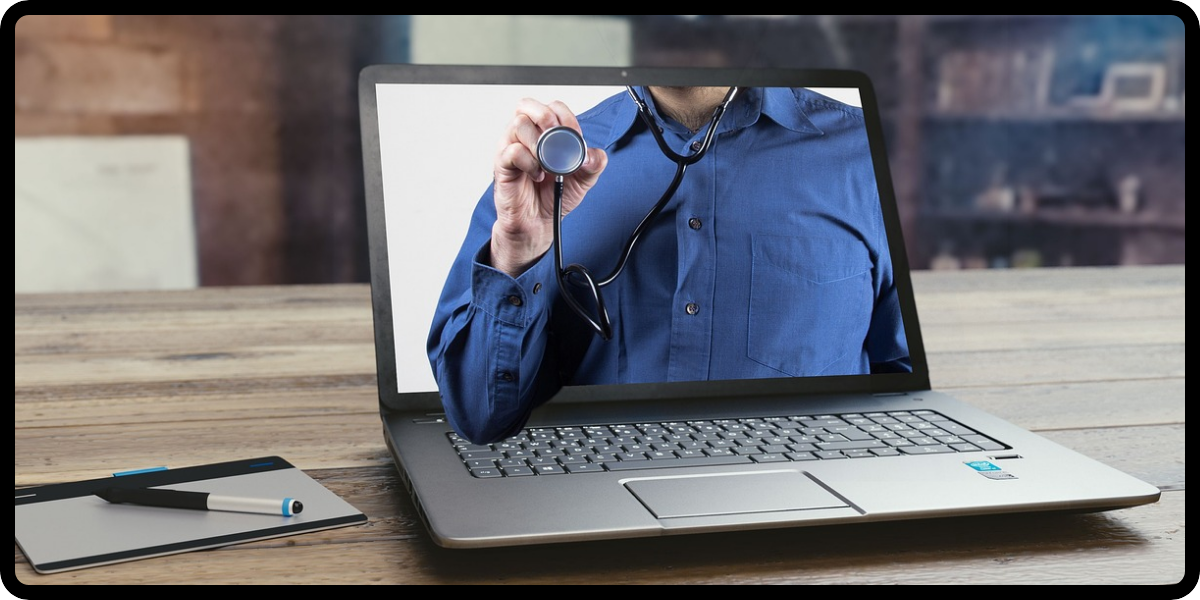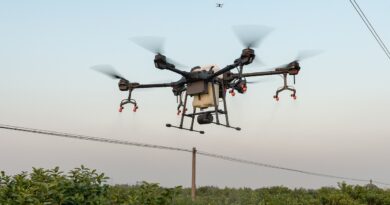5G in Healthcare boost Telemedicine and patient care

Introduction:
The 5G revolution and technology have become an essential part of the healthcare sector in today’s fast-paced society. The adoption of 5G technology, which promises to change healthcare by enabling real-time remote consultations, supporting medical IoT devices, and enabling data-driven diagnostics, is one of the most important technical developments in recent years. In this post, we’ll look at how 5G is improving healthcare and ushering in a new era of telemedicine and patient care.
The Rise of 5G in Healthcare
The fifth-generation wireless network technology, or 5G, offers extremely low latency, lightning-fast data transfer rates, and dependable connectivity. These qualities are essential to changing the healthcare environment. This is how:
Real-Time Remote Consultations in Healthcare:

Real-time remote consultations have become significantly more common in the 5G age, changing the game for healthcare. These consultations enable virtual communication between patients and medical professionals, providing a number of benefits:
- Accessibility and Convenience:
Healthcare is now not just provided in physical clinics, thanks to real-time virtual consultations. Patients can consult doctors and receive care at the convenience of their own homes. This accessibility is especially important for those with mobility issues, individuals who live in rural places, and people in emergency situations when physical visits could be dangerous, such as pandemics.
2. Reduced Waiting Times:
Traditional in-person medical visits can include lengthy waits, both before the appointment and during it. These delays are removed with real-time remote consultations, allowing patients to obtain care right away.
3. Reduced exposure to infectious diseases:
Real-time remote consultations are helpful in halting the transmission of illnesses during epidemics of infectious diseases like the flu or COVID-19.https://en.wikipedia.org/wiki/COVID-19_pandemic In busy waiting rooms, patients may consult healthcare specialists without running the danger of spreading germs.
4. Continuity of treatment:
For patients with chronic diseases, real-time virtual consultations make it easier to provide continuing treatment. It is simple to arrange regular check-ins with medical professionals, ensuring that patients get prompt interventions and alterations to their treatment programs.
5. Cost Savings:
Virtual consultations are frequently less expensive than in-person ones. Patients save money on time off work, parking fees, and transportation costs.
6. Access to Specialist Expertise:
Patients in distant or underdeveloped locations can get specialized healthcare treatments without having to travel great distances. Real-time consultations provide patients access to professionals from all around the world, providing the finest treatment.
7. Improved Follow-Up treatment:
After a physical appointment, follow-up treatment might be difficult to arrange. The management and convenience of follow-up sessions are improved through real-time remote consultations, which also improve patient compliance and outcomes.
8. Improved Patient Engagement:
Patients are more likely to take an active role in their healthcare when they can easily reach their healthcare professionals. Patient participation in managing their own health is facilitated via real-time consultations.
9. Utilizing healthcare resources effectively:
Healthcare providers may better deploy their resources because of real-time remote consultations. They may concentrate on providing in-person treatment when it is actually necessary while employing virtual consultations for checkups and minor concerns.
Conclusion:
The ability for healthcare professionals to consult with patients remotely in real-time is being revolutionized by 5G technology. These consultations ensure that patients may get healthcare when and where they need it most by providing unmatched convenience, accessibility, and efficiency. Real-time remote consultations are anticipated to play a bigger part in the future of healthcare as technology develops, boosting patient outcomes and overall healthcare delivery.
Medical IoT Devices and the 5G Revolution in Healthcare:

The fusion of 5G technology with medical IoT (Internet of Things) devices has ushered in a new age in healthcare. These gadgets, which are linked over 5G networks with fast speeds and low latency, have the potential to revolutionize patient monitoring, care, and treatment in a number of ways:
- Real-time monitoring:
Medical IoT gadgets like wearable fitness trackers, blood glucose metershttps://en.wikipedia.org/wiki/Blood_glucose_monitoring, and heart rate monitors are able to constantly capture and transmit patient data to healthcare professionals in real-time. This data is transferred instantaneously because of 5G’s ultra-low latency, enabling quick analysis and action.
2. Remote Patient Monitoring:
IoT devices with 5G connectivity offer the possibility of remote patient monitoring for patients with long-term problems. Without the need for regular in-person visits, healthcare practitioners may monitor patients’ vital signs, medication compliance, and general health condition. More proactive and individualized care results from this.
3. Improved Data Accuracy:
The 5G networks’ high capacity and dependability guarantee that data from medical IoT devices is sent accurately and continuously. For the best possible diagnostic and treatment options, this is essential.
4. Support for telemedicine:
By integrating medical IoT devices with telemedicine systems, patients may exchange real-time data with their doctors during virtual consultations. This information aids medical personnel in making defensible choices regarding the health of patients.
5. Emergency Alerts:
In critical situations, such as a sudden change in a patient’s vital signs, 5G-enabled medical IoT devices can send immediate alerts to healthcare providers, enabling rapid response and potentially saving lives.
6. Surgical Precision:
IoT devices can be used during operations to track patients’ vital signs and give surgeons immediate feedback. In order to improve the accuracy and safety of procedures, 5G’s reduced latency makes sure that this information is supplied immediately.
7. Healthcare Cost Savings:
By facilitating remote monitoring and early intervention, 5G-powered medical IoT devices can lower emergency room visits and readmissions to hospitals, eventually saving money for both patients and healthcare providers.
8. Clinical studies and data analysis:
Medical IoT devices provide a ton of data related to healthcare. For clinical research, medication development, and epidemiological studies, researchers and healthcare institutions may now quickly gather and evaluate this data thanks to 5G.
9. Scalability:
Because 5G networks can handle a huge number of IoT devices at once, it is feasible to scale up remote monitoring programs and take into account an increasing number of connected devices in the healthcare industry.
In conclusion, the convergence of IoT medical devices and 5G technologies is changing healthcare. As a result, healthcare expenditures are decreasing, and overall health outcomes are improving. It also enables more proactive, data-driven, and tailored patient treatment. We can anticipate even more cutting-edge uses of medical IoT devices in healthcare as 5G continues to spread around the globe, which will eventually benefit both patients and healthcare practitioners.
Data-Driven Diagnostics and the Role of 5G in Healthcare:

The use of 5G technology has considerably improved data-driven diagnostics in healthcare. The way illnesses are identified and treated has undergone radical change as a result of this potent combination. Here are some ways that 5G is transforming data-driven diagnostics:
- Rapid Data Transmission:
Thanks to 5G’s blazing-fast data transmission capabilities, medical professionals may access patient information, test results, and diagnostic images almost instantly. This guarantees that crucial information is available precisely when it is required for quick decision-making.
2. Seamless Collaboration:
The ability to interact without interruption is made possible by 5G, allowing medical experts to work together anywhere in the world. Real-time reviews and discussions of patient cases by radiologists, pathologists, and experts facilitate speedier diagnosis and treatment options.
3. Remote Expert Consultations:
5G enables expert and specialized remote consultations. In order to increase the precision of diagnoses and the breadth of knowledge accessible, healthcare practitioners can consult with specialists from all over the world or request second views.
4. Enhanced Imaging:
Enormous quantities of data are generated by high-resolution medical imaging techniques like MRI and CT scans. These data sets may be instantly sent over 5G networks to professionals and diagnostic instruments. This makes it possible to analyze medical pictures more precisely and thoroughly, which helps in the early diagnosis of illnesses.
5. Integration of artificial intelligence (AI):
5G’s low latency and bandwidth are essential for AI applications in the healthcare industry. To aid in diagnostic and treatment suggestions, AI systems can analyze enormous volumes of patient data, including genomes, electronic health records, and medical imaging.How Sustainable Practices Can Extend Your Life
6. Personalized medicine:
5G-enabled data-driven diagnostics enable the creation of customized treatment strategies. Real-time genetic and clinical data analysis can be used to customize treatments based on each patient’s particular genetic profile and medical background.
7. Telepathology:
Pathologists can remotely examine tissue samples and slides using digital microscopy, supported by 5G connectivity. This is especially valuable in areas with a shortage of pathologists or during emergency situations.
8. Predictive Analytics:
5G-supported systems can forecast disease outbreaks, patient deterioration, and other healthcare trends by examining previous patient data and continually obtaining real-time data. The allocation of resources and preventative care are improved by this proactive approach.
9. Reduced diagnostic delays:
The capacity for healthcare practitioners to communicate data effectively and with fast access reduces diagnostic delays. Patients may get a prompt and accurate diagnosis, which speeds up the start of therapy.
10. Improved Patient Engagement:
5G-enabled data-driven diagnostics empower patients to take an active role in their healthcare. Patients can access their health data, monitor progress, and participate in shared decision-making with their healthcare providers.
In conclusion, data-driven diagnostics in healthcare have shifted to rely heavily on 5G technologies. It facilitates professional cooperation, speeds up the flow of information, and makes it possible to apply cutting-edge tools like artificial intelligence (AI) to improve diagnosis precision and therapeutic efficacy. We can anticipate even more cutting-edge data-driven diagnostics applications as 5G networks continue to grow, which will eventually enhance patient outcomes and make the healthcare system more effective.
Enhanced Surgeon-Patient Interactions with 5G Technology:
The integration of 5G technology in healthcare has revolutionized the way surgeons and patients interact, leading to improved outcomes and better overall patient care. Here’s how 5G enhances surgeon-patient interactions:
- Real-Time Consultations:
Real-time video consultations with patients now provide surgeons the chance to talk with patients before to surgery, check in with them afterward, and address any concerns they may have. These online exchanges remove regional restrictions and improve access to healthcare.
2. Remote expertise:
Through high-definition video conferencing, surgeons may get advice and consultations from specialists situated anywhere in the world. This is especially useful in difficult procedures when experience is required.
3. Surgical telementoring:
During operations, surgeons can get assistance and advice from distant professionals in real time. Due to 5G’s low latency, feedback is always immediate, improving surgical precision and lowering the possibility of problems.
4. Patient Education:
Surgeons may inform patients about their diseases, available treatments, and surgical procedures using multimedia technologies supported by 5G. The knowledge and decision-making of patients are improved by visual aids and interactive presentations.
5. Post-Operative Monitoring:
5G enables ongoing patient post-operative monitoring. Remote monitoring of vital signs, recovery status, and early warning signals of problems is possible for surgeons. This makes prompt actions possible and lessens the requirement for numerous in-person follow-up visits.
6. Enhanced Imaging:
During operations, surgeons have real-time access to high-resolution medical imaging, such as MRI and CT scans. This improves surgical process accuracy and provides essential information for decision-making.
7. Reduced Surgical Delays:
With 5G, doctors can obtain patient information, medical histories, and test results fast, cutting down on wait times in the operating room. This guarantees that procedures are carried out effectively and using the most recent knowledge.
8. Improved Informed Consent:
Before surgery, surgeons may utilize 5G to provide patients comprehensive information, including possible risks and advantages. Patients may clarify issues and ask questions, which results in more informed consent.
9. Virtual reality (VR) and augmented reality (AR):
The utilization of VR and AR technologies is supported by 5G’s high bandwidth and low latency. In order to improve surgical preparation, surgeons can utilize these immersive technologies to plan operations, practice skills, and even run patient simulations.
10. Family Involvement:
Families of patients can take part in online consultations and get information on the operation and recovery. This encourages openness and psychological support for sufferers.
In conclusion, the availability of real-time communication, remote knowledge, and cutting-edge instruments that improve surgical accuracy and patient care has revolutionized surgeon-patient relations in healthcare. These advancements assist both patients and healthcare workers in the long run by enhancing surgical results as well as making healthcare more patient-centered and accessible.
Remote Monitoring and Emergency Response in Healthcare with 5G:
The integration of 5G technology in healthcare has brought about significant advancements in remote monitoring and emergency response. Here’s how 5G is transforming these critical aspects of patient care:
- Continuous Patient Monitoring:
5G-enabled equipment, such as wearable sensors and medical IoT devices, enable continuous monitoring of patients’ vital signs, including heart rate, blood pressure, and oxygen saturation levels. The safe transmission of this real-time data to healthcare professionals allows for preemptive actions as needed.
2. Early Health Issue Detection:
Remote monitoring with 5G makes it easier to spot health problems and changes in patients’ situations. When abnormalities are found, algorithms may evaluate the gathered data and provide notifications to healthcare personnel, enabling quick replies.
3. Chronic Disease Management:
5G-enabled remote monitoring can help patients with long-term diseases like diabetes or heart disease. By monitoring patients’ progress, modifying treatment regimens, and offering counseling, healthcare professionals can lower the likelihood of problems and hospitalizations.
4. Emergency Telemedicine:
In times of need, 5G-enabled telemedicinehttps://en.wikipedia.org/wiki/Telehealth enables medical professionals to examine patients remotely, perform early triage, and make crucial choices on the deployment of emergency responders. When urgent on-site care is not possible, this can be extremely helpful.
5. Faster Data Transfer for Emergency Personnel:
Through 5G networks, paramedics and emergency responders may access patients’ medical histories, allergies, and vital sign data, enabling better informed judgments and quicker reaction times in emergency situations.
6. Coordination of Care:
5G enables seamless coordination between healthcare practitioners in complex instances that call for a multidisciplinary approach. Even from a distance, specialists may analyze patient data in real-time and offer feedback on treatment options.
7. Reduced Response Times:
The 5G networks’ reduced latency makes sure that data reaches medical professionals and first responders immediately. Every second matters in urgent circumstances, and 5G speeds up reaction times.
8. Home-Based Care for Seniors:
With an aging population, 5G-enabled remote monitoring and emergency response systems are vital for the elderly. Seniors can age in place with confidence, knowing that help is just a button press away in case of falls or health emergencies.
9. Remote Consultations for distant locations:
5G-enabled telemedicine and remote monitoring fill the gap in underserved or distant locations with restricted access to healthcare institutions, ensuring that patients receive prompt care and assistance.
10. Patient Empowerment:
Through 5G-capable gadgets, patients may take an active role in their own treatment. Because they have more control over their health information, they feel more empowered and accountable for their well-being.
As a result of its quick, dependable, and real-time connection, 5G technology is transforming remote monitoring and emergency response in the healthcare industry. In addition to improving patient outcomes, this also makes healthcare delivery more effective and efficient, particularly in emergency circumstances where prompt treatments are crucial.
In conclusion, 5G technology is bringing about a new age in healthcare, one where telemedicine, medical IoT devices, and data-driven diagnostics are more widely available and efficient than ever. With greater access to treatment, better results, and a more comfortable healthcare experience, 5G’s influence on healthcare is profound.
The potential for healthcare innovation is endless as we work to fully use 5G. Thanks to the revolutionary power of 5G technology, patients may look forward to a future where their health is monitored and treated with unmatched accuracy.
Visit greenhealings.com frequently for more informative articles on the relationship between technology and healthcare.




